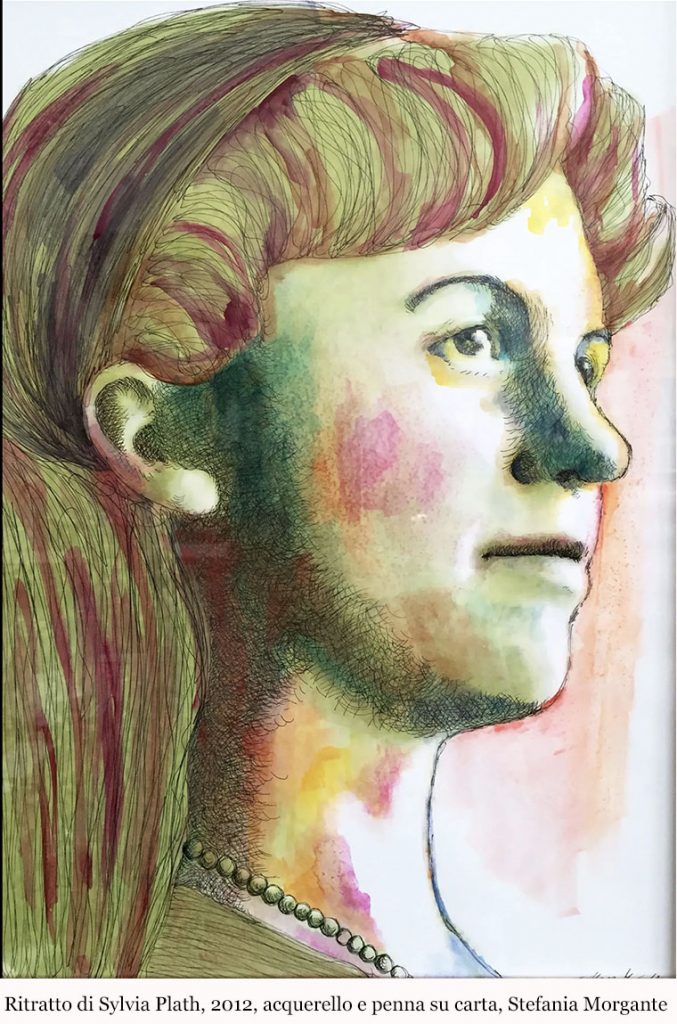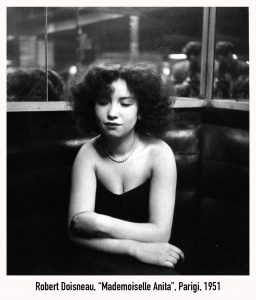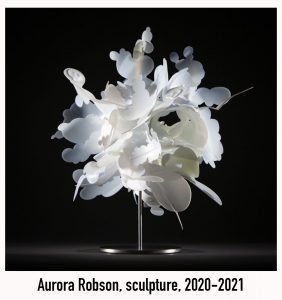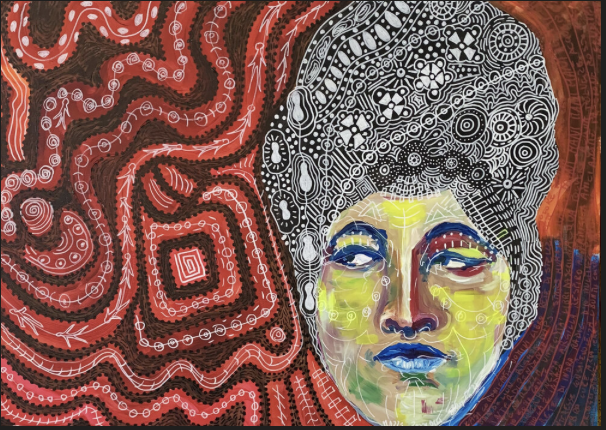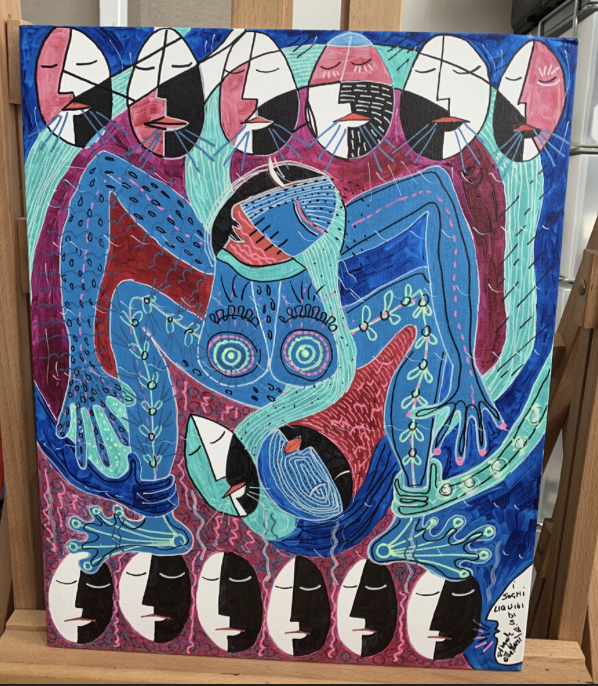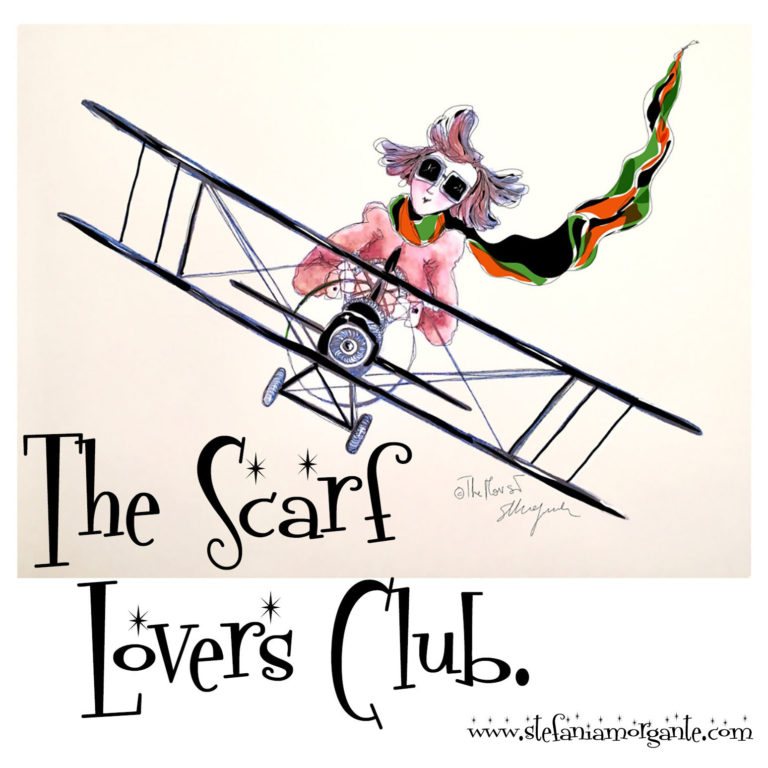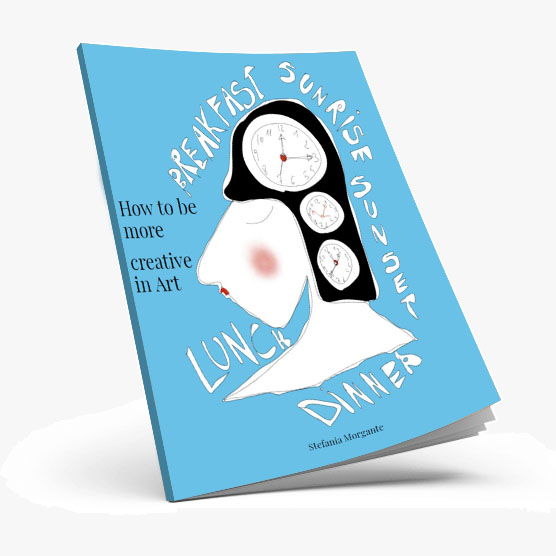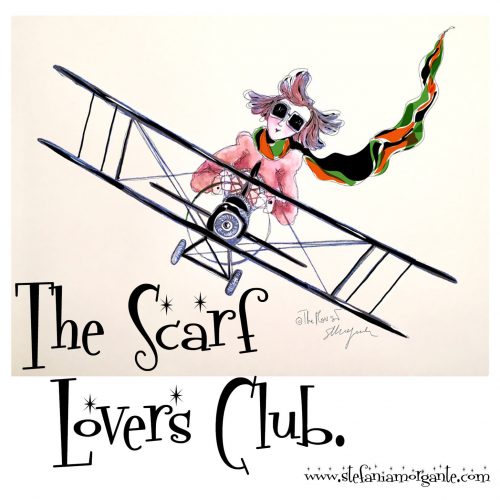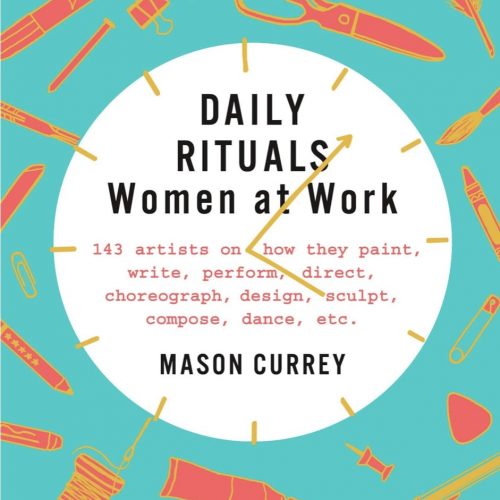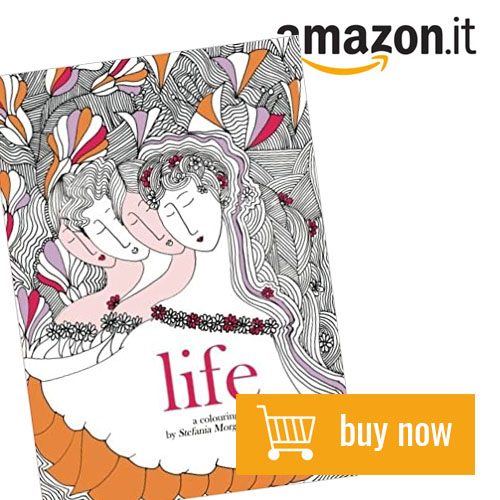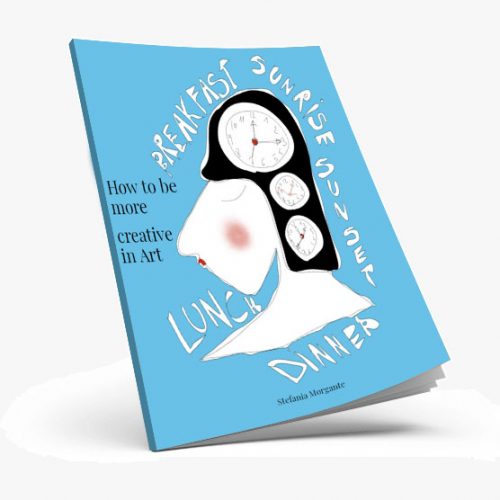Exploring the Visual World Behind Her Literary Legacy.
For fans of Sylvia Plath, her literary brilliance is well-known.
The American poet and novelist captivated audiences with her hauntingly beautiful and introspective works. But beyond writing, Plath also had a deep appreciation for visual art, which greatly influenced her writing and played a significant role in her creative process. In this article, I delve into the artistic brilliance of Sylvia Plath and explore the visual world that inspired her literary legacy.
Plath’s fascination with visual art can be seen throughout her poetry and prose, where she frequently references paintings, sculptures, and other forms of visual expression.
By intertwining visual imagery with her words, she created a multi-dimensional experience for her readers, allowing them to not only engage with her ideas but also immerse themselves in the vivid imagery she conjured.
The influence of visual art on Sylvia Plath’s writing.
Sylvia Plath’s writing was deeply influenced by visual art. Throughout her life, she sought inspiration from various art forms, including paintings, sculptures, and even photography.
One of the artists who had a significant impact on Plath’s work was Vincent van Gogh. His vibrant and emotionally charged paintings resonated with her, and she often referenced his works in her poetry.
In her poem “The Night Dances,” Plath draws inspiration from van Gogh’s painting “Starry Night.” She describes the night sky as “a whirlpool of blackness” and “the shadow of the swan,” paying homage to van Gogh’s distinctive brushstrokes and swirling patterns. By incorporating visual references into her poetry, Plath not only adds depth and complexity to her work but also invites readers to engage with the visual art that inspired her.
Art for Plath is expanding talent in describing the world, a crucial aid in probing the space around her.
The everyday scenes she draws trace the perimeters of things and seem to suggest cues that she will later describe in poems.
As with Van Gogh’s shoes, the shoes Plath draws here also describe a world.
If for Van Gogh it was the peasant world, here it is woman in the frustration of subalternity and the role of the perfect housewife. The high heels, the perfection of woman’s image in society.
Plath perfectly describes women’s desire and awareness of imposed limitations, in the Diaries she writes, “I am jealous of men […]. It is an envy that stems from a desire to be active and dynamic, not passive and subordinate. I envy man the physical freedom to lead a double life: career and sexual and family life.”
Here to me that pair of shoes seems as powerful as Van Gogh’s shoes.
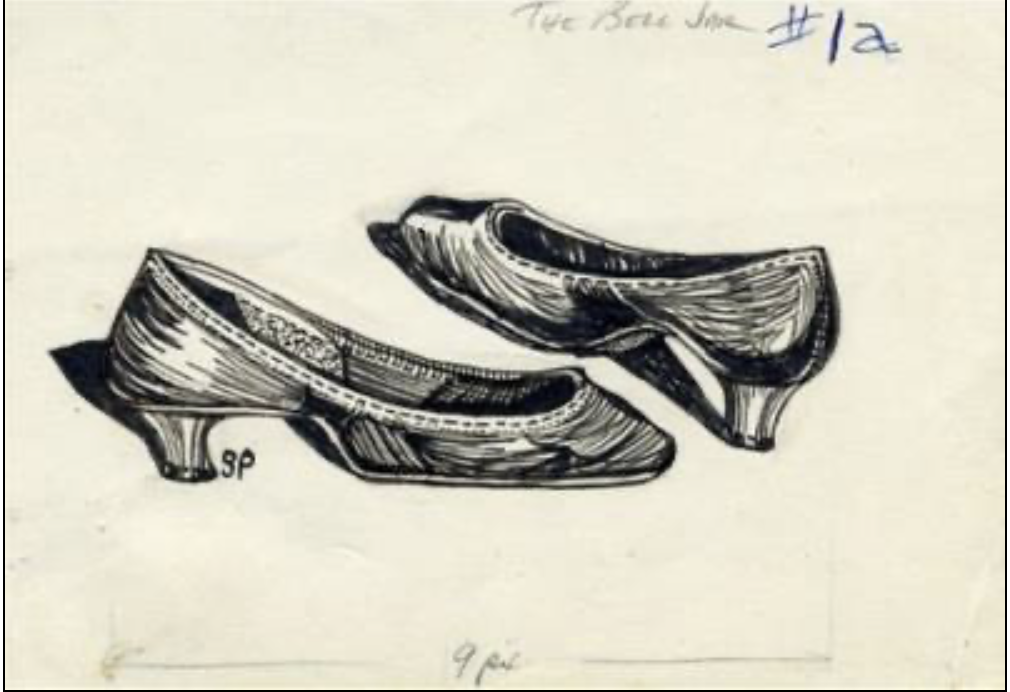
In one drawing Plath seems to be inspired by Boccioni and the search for relationships between object and space. As in her verses, so with this drawing the dynamism of thought, of society in crisis, the difficulty of finding a space among writers in addition to the desire to be perfect in the family and maternal sphere, is extremely interesting: Plath simultaneously describes thoughts flowing into the surrounding space. There is no boundary between object/person and space.
Almost a thinking aloud. The color is a radiating alphabet. The hands are either open in surrender or in a welcoming gesture.
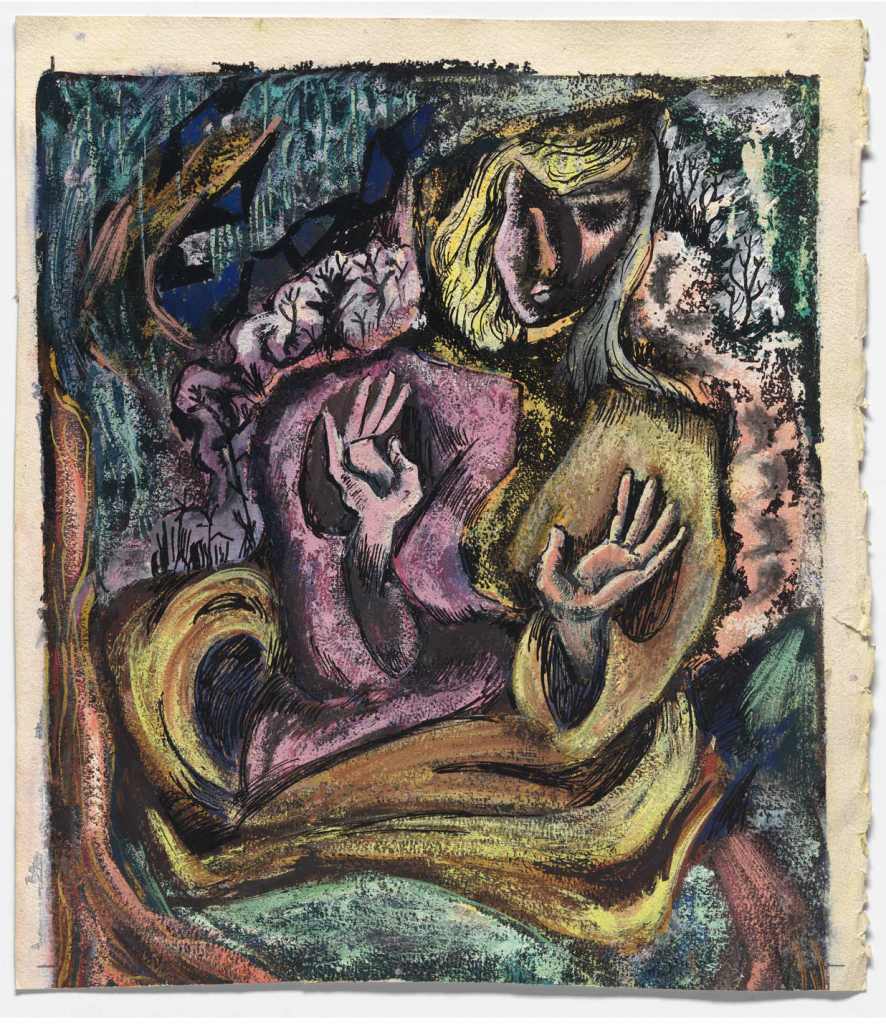
The mastery of drawing as well as painting also spills over into further techniques such as collage.
One of her strongest expressionist collages from 1960 is dedicated to her anti-war stance. Plath’s family was pacifist. When her father died, her mother passed on her father’s convictions to her children, who absorbed the essence.
War, consumerism, feminism still implied, advertising, religion, and symbolism are encapsulated in this powerful collage you see below.
In the center, Eisenhower sits smiling and determined at his desk.
In his hands, Plath has placed a series of playing cards; on the desk are digestive tablets (“Tums”) and a camera on which a cutout of a model in a swimsuit is posed. On the model’s thighs posing is the slogan “Every man wants his woman on a pedestal”; a bomber points at her abdomen; in one corner is a small photo of Nixon giving a speech. A couple sleeping with their masks on is accompanied by the caption, “It’s HIM AND HER time across America.” In the upper left corner of the image, this headline: “America’s most famous living preacher, whose religious revival campaigns have reached tens of millions of people both in the United States and abroad.” And phrases like rebus: “the new worldly look of the insidious eagle beak case,” “luxury lovers can save money.”
Technology, civil rights, war, image, publicity. The world is fast, life is intricate. It is complicated to relate to the new speeds, as well as to all the parts of oneself that no longer collide. Politics is ambiguous, the power of money muddies the waters. People no longer interpret the world in its entirety but rather, find themselves engulfed by extreme events. war like consumerism.
Drawing, creating, writing. for Sylvia Plath are parts of a single artistic project.
Life is unbearable, there is an urgency to live and to understand.
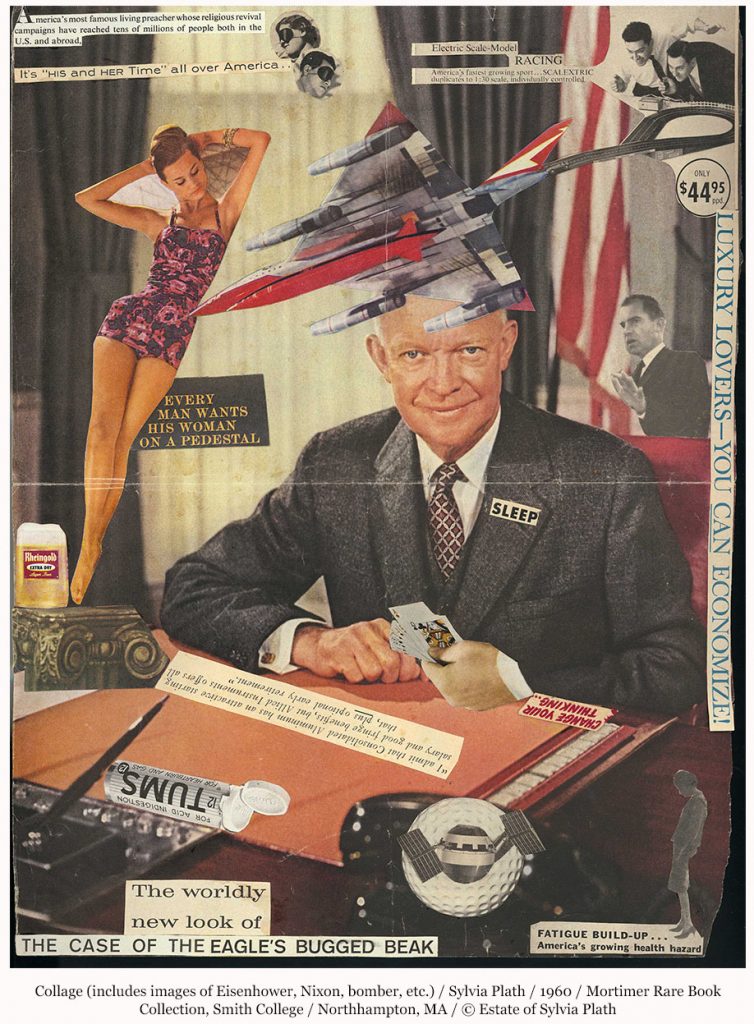
Sylvia Plath wrote two poems inspired by de Chirico, two by Rousseau and four by Klee.
While writing them, she gave an interview on April 18, 1958 (Lee Anderson, Springfield, Massachusetts) in which in addition to reading her poems, she also talked about the influence of art on her: “I have a visual imagination: For example, my inspiration is painting and not music when I turn to some other form of art…. I see these things very clearly.”
Her drawings , sketches, some letters and postcards, are preserved in the archives at Smith College in Massachusetts and the Lilly Library (Indiana University, Bloomington).
Upon the death of Sylvia’s husband Ted Hughes, some drawings passed to her children Frieda and Nicholas. Upon the latter’s death in 2009 by suicide, the archive passed to Frieda. In the exhibition held at the Mayor Gallery in London in November 2011, the drawings were sold.
The little girl who wanted to be God, as Plath wrote, is still my obsession. I read today’s world through her words and find them so relevant that I am amazed every time.
And the paintings, like the drawings, are of a remarkable, contemporary force. To be discovered and rediscovered. As a woman, as an artist.
Plath’s fascination with visual art extended beyond the realm of paintings.
She was also drawn to sculpture and often used sculptural imagery to convey powerful emotions. In her poem “The Disquieting Muses,” Plath references Giacometti’s sculptures, describing them as “thin as a sheet of paper” and “the shadow of a sound.” Through these visual metaphors, Plath explores themes of isolation, fragility, and the human condition.
My dissertation analyzed precisely the poem “The Disquieting Muses” inspired by de Chirico’s painting.
By incorporating visual art into her writing, Plath creates a rich tapestry of imagery that enhances the emotional impact of her poems and prose. Her ability to fuse different art forms is a testament to her artistic brilliance and her unique approach to storytelling.
The role of photography and visual symbolism in Sylvia Plath’s life and work.
In addition to her love for painting and sculpture, Sylvia Plath also had a deep appreciation for photography.
She often used photography as a means of self-expression and self-exploration, capturing moments and emotions through the lens of her camera. Photography played a significant role in her creative process, allowing her to visualize and document the world around her.
Plath’s interest in photography is evident in her poem “Berck-Plage,” where she describes a photograph she took at a French seaside resort. She writes, “The camera shutter clicks once and doesn’t move again,” emphasizing the frozen nature of the photograph and the power it holds to preserve a moment in time. Through this poem, Plath reflects on the transience of life and the limitations of photography as a medium.
Visual symbolism also played a crucial role in Plath’s life and work. One of the most striking examples of visual symbolism can be found in her poem “Ariel,” where she uses the image of a horse as a symbol of freedom and empowerment. The horse becomes a powerful metaphor for Plath’s own journey of self-discovery and liberation, as she breaks free from the constraints of societal expectations and embraces her own voice.
Plath’s use of photography and visual symbolism adds another layer of depth to her writing. By incorporating visual elements into her work, she invites readers to engage with her words on a visual level and experience the world through her unique perspective.
Sylvia Plath’s colors.
Another significant aspect of Plath’s visual art is her use of color. In her drawings, she often incorporated vibrant hues and bold contrasts, creating visually arresting compositions. The use of color adds another layer of depth to Plath’s visual art, further enhancing the emotional impact of her work.
Plath’s visual art and drawings provide a window into her creative mind and offer a deeper understanding of the artistic brilliance that defined her legacy. They demonstrate her ability to express complex emotions and ideas through visual imagery, showcasing the depth and breadth of her artistic talent.
Sylvia Plath’s enduring artistic brilliance and impact.
Sylvia Plath’s artistic brilliance extends far beyond her writing. Her deep appreciation for visual art and her ability to merge different art forms have left an indelible mark on her literary legacy. Through her use of vivid imagery, visual metaphors, and visual art, Plath created a multi-dimensional experience for her readers, inviting them to engage with her ideas on a visual level.
Plath’s exploration of mental health, her use of powerful imagery, and her enduring influence on contemporary visual artists all contribute to her lasting impact on the world of art and literature. Her ability to capture the complexities of the human experience and convey them through visual expressions is a testament to her artistic brilliance.
Sylvia Plath’s visual legacy serves as a reminder of the power of creativity and the enduring impact of artistic brilliance. Through her words and visual art, Plath has left an indelible mark on the artistic landscape, inspiring generations of artists and captivating audiences with her unique perspective on the world.
